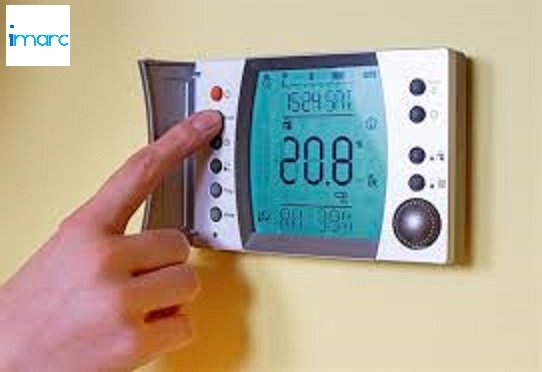Smart Thermostat Market: Global Size, Share, Sales, Statistics, Trends and Forecast to 2023
The global smart thermostat market has witnessed a robust growth over the past few years. This can be attributed to the increasing adoption of connected devices along with the various advantages offered by smart thermostats.
The latest report by IMARC Group, titled “Smart Thermostat Market: Global Industry Trends, Share, Size, Growth, Opportunity and Forecast 2018-2023”, finds that the global smart thermostat market reached a value of US$ 1.1 Billion in 2017. Smart thermostats allow users to control the heating and air conditioning of their homes or offices via the internet.These devices collect data related to the behavior and specific needs of the user and adjust themselves accordingly. Smart thermostats can also be used with home automation systems to offer customized settings which minimize energy use while maximizing comfort. Some of the other advantages offered by smart thermostats include recording the run time of HVAC systems, monitoring internal/external temperatures as well as improving indoor air quality. Owing to the convenience provided by smart thermostats, the demand for these devices is being accelerated worldwide.

Request Free a Copy Sample Report: https://www.imarcgroup.com/request?type=report&id=993&flag=B
Global Smart Thermostat Market Trends:
Smart thermostats are highly efficient and help homeowners in reducing the overall electricity consumption and related operating costs. Moreover, they enable the users to monitor energy utilization as well as adjust temperatures from remote locations. In addition, the growing base of tech-savvy consumers has led to a rise in the adoption of smart homes and connected devices, which is projected to create a positive outlook for the smart thermostat industry. This is supported by the growing sales of smart home assistants, such as Google Home and Amazon Echo, coupled with the increasing number of consumers opting for home automation solutions. Owing to the above-mentioned factors, the market is projected to reach a value of US$ 3.4 Billion by 2023, registering a CAGR of 20% during 2018-2023.
Global Smart Thermostat Market Summary:
- Based on product, the market has been segmentedas standalone smart thermostats, connected smart thermostats and learning smartthermostats. Amongst these, standalone smart thermostats are the most widelyused products owing to their cost-efficiency.
- On the basis of component, temperature sensorrepresents the leading segment, accounting for the majority of the globalshare. Other components include display, humidity sensor and motion sensor.
- The market has been segregated based ontechnology into wired and wireless smart thermostats. Currently, wireless smartthermostat dominates the market, holding the biggest market share. The wirelesssmart thermostat segment is further divided into Wi-Fi, Zig Bee and others.
- On the basis of application, the report findsthat the residential sector is the largest segment, followed by the commercialand industrial sectors.
- Region-wise, the market has been segmented intoNorth America, Asia Pacific, Europe, Middle East and Africa, and Latin America.Amongst these, North America is the leading market for smart thermostats.
- The competitive landscape of the market has alsobeen examined with some of the key players being Control4 Corporation, NestLabs, Inc., Emerson Electric Co., Honeywell International Inc., Ecobee, Inc.,Schneider Electric SE, Tado GmbH and Nortek, Inc.
@cheetah view original content: http://www.digitaljournal.com/pr/3995164
source: imarc group